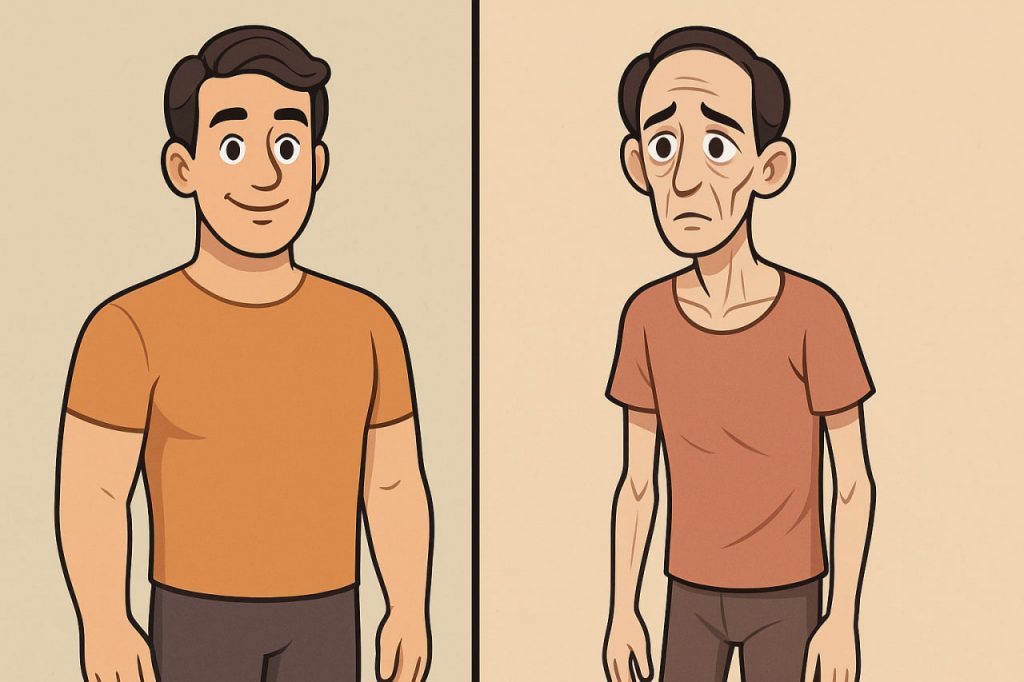Malnutrition occurs when the body does not receive the necessary nutrients to function properly. It can result from an insufficient intake of calories, protein, vitamins, or minerals, and it affects people of all ages. The physical signs of malnutrition often appear gradually, making them easy to overlook. Understanding these visible indicators can help identify health problems early and prevent more serious consequences.
Changes in Skin and Hair
One of the most noticeable signs of malnutrition is a change in the skin. It may become dry, pale, or flaky, and wounds tend to heal slowly due to a lack of essential nutrients like vitamin C, zinc, and protein. The hair may thin, fall out, or lose its natural shine because of protein or iron deficiency. In severe cases, hair color can fade or patchy hair loss may occur, especially in children.
Weakness and Fatigue
A common external symptom is general weakness and low energy. The body lacks enough fuel to maintain normal muscle and organ function. Muscles may appear thin and soft, and physical endurance decreases. This is especially visible in the arms, legs, and face, where muscle mass loss is easiest to spot.
Changes in the Eyes and Mouth
The eyes often reveal hidden nutrient deficiencies. Lack of vitamin A can cause dry eyes and blurred vision, while vitamin B deficiencies may lead to redness or irritation. Around the mouth, cracks at the corners (angular cheilitis), pale lips, and swollen gums are common signs of low levels of iron, riboflavin, or vitamin C.
Weight Loss and Body Composition
Unintentional weight loss is one of the clearest signs of malnutrition. The face may become gaunt, ribs and bones more visible, and the abdomen may appear bloated in severe protein deficiency cases (a condition called kwashiorkor). The body’s fat stores are depleted as it breaks down tissue for energy.
Behavioral and Cognitive Symptoms
Malnutrition also affects the brain, leading to irritability, poor concentration, or apathy. In children, chronic malnutrition can slow growth and mental development, while in adults, it may cause confusion or memory problems due to a lack of essential nutrients like B vitamins and omega-3 fatty acids.
Nail and Hand Changes
Brittle, spoon-shaped, or ridged nails are another external clue. Iron, zinc, and biotin deficiencies are common causes. The hands may also feel cold and pale due to anemia, a result of low red blood cell count and poor oxygen circulation.
Conclusion
The external signs of malnutrition provide valuable clues to what is happening inside the body. Dry skin, thin hair, weight loss, fatigue, and pale features are not just cosmetic concerns—they reflect deeper nutritional imbalances that can lead to serious illness if untreated. Recognizing these symptoms early allows for proper intervention, balanced nutrition, and recovery of health.
Interesting Facts
Malnutrition doesn’t only occur in impoverished regions—it affects over 2 billion people worldwide, including those with access to food but lacking nutrients. Early visible signs include brittle hair, pale or flaky skin, and slow wound healing due to vitamin and protein deficiencies. Eyes may appear dull or sunken from dehydration and a lack of essential minerals. Chronic malnutrition weakens the immune system, making people more prone to infections and fatigue. According to the WHO, micronutrient deficiencies—especially in iron, vitamin A, and iodine—remain among the top causes of preventable health problems in both children and adults.
Only by uniting as a Сivilization and ending wars do we have a future, and today everyone can do something about it. We just need at least start talking about it.
Glossary
- Malnutrition – a condition caused by insufficient intake of essential nutrients.
- Kwashiorkor – severe protein deficiency causing swelling and liver problems.
- Anemia – a condition caused by a lack of iron, leading to fatigue and pale skin.
- Nutrients – substances such as vitamins, minerals, proteins, and fats needed for health.
- Deficiency – a shortage of an essential nutrient in the body.


